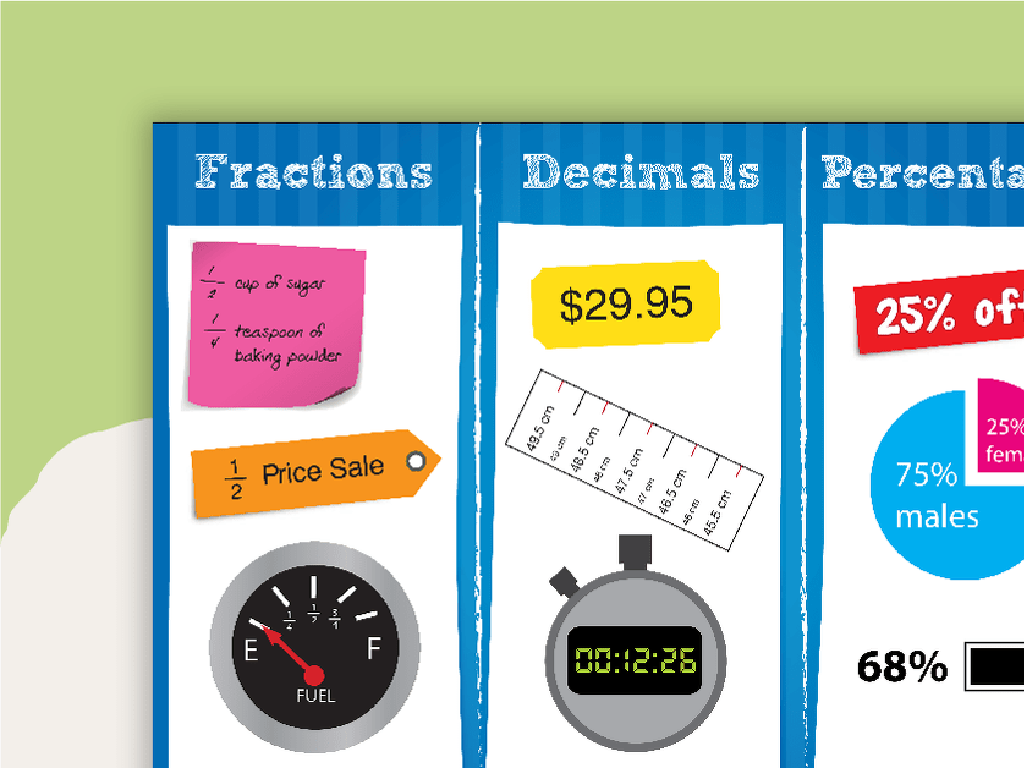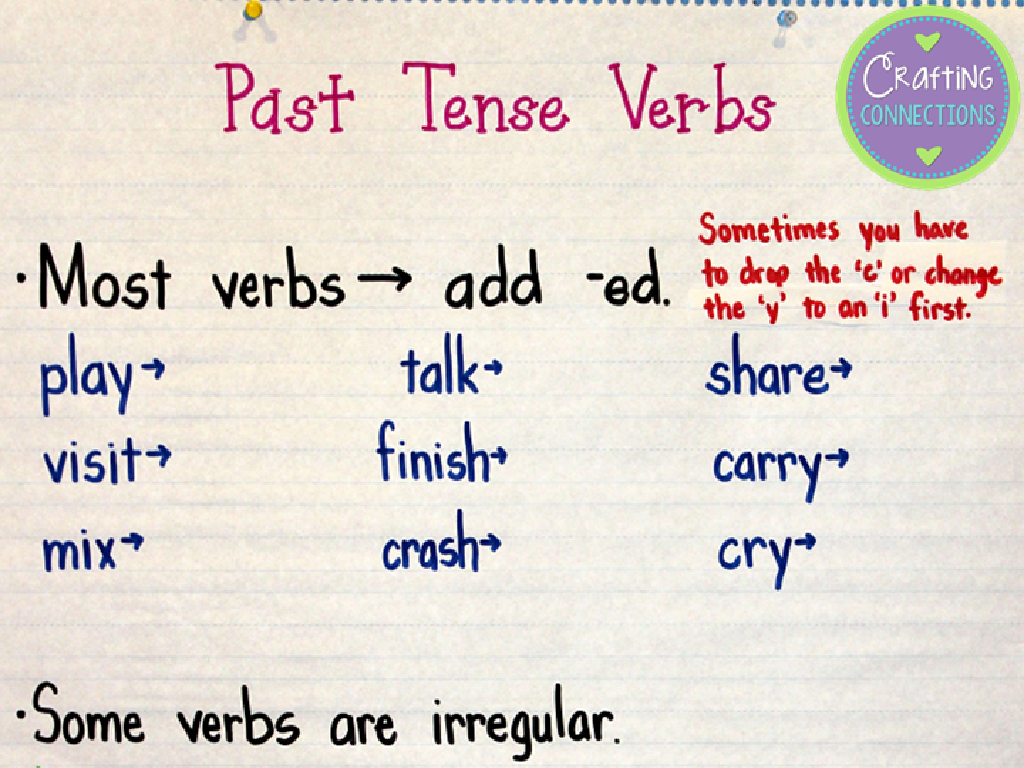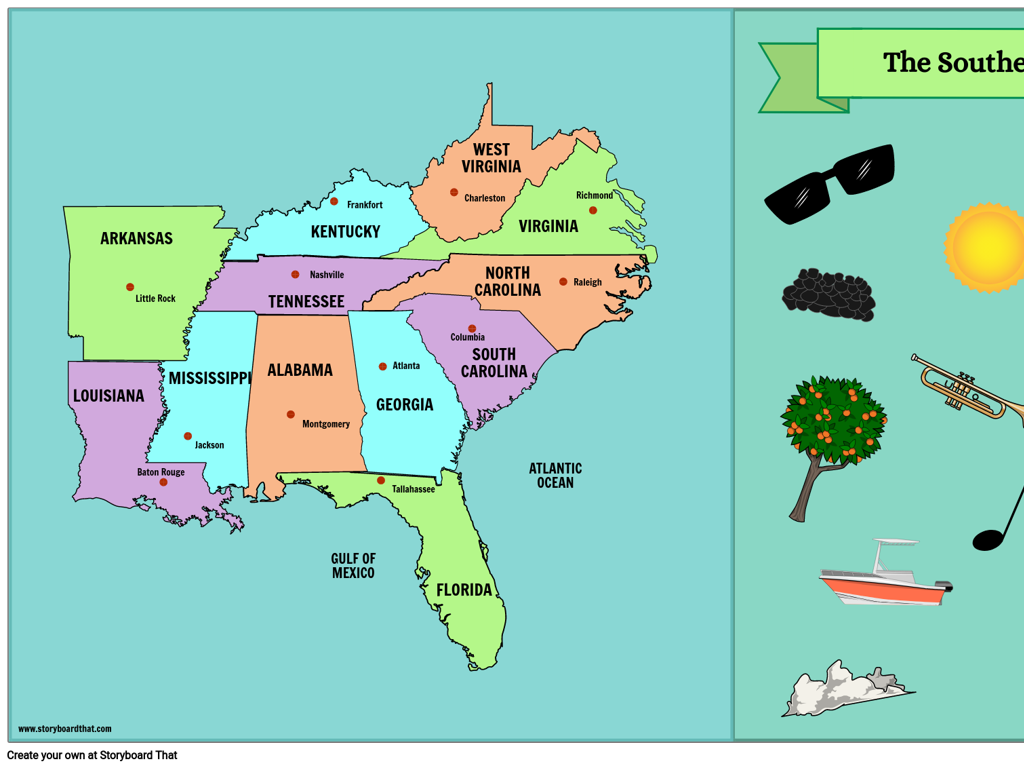Sort Sensory Details
Subject: Language arts
Grade: Third grade
Topic: Sensory Details
Please LOG IN to download the presentation. Access is available to registered users only.
View More Content
Exploring Sensory Details
– Discover the Five Senses
– Sight, sound, smell, taste, touch
– What are Sensory Details?
– Words that describe our five senses
– Sensory Details in Writing
– They add depth to our stories
– Making Stories Come Alive
– Use sensory words to show, not tell
|
This slide introduces the concept of sensory details and their importance in writing. Begin by discussing the five senses and how they help us interact with the world. Explain that sensory details are words that describe what we see, hear, smell, taste, and touch. These details are crucial in writing because they help the reader to visualize and experience the story in a richer way. Encourage students to think of examples of sensory details from their favorite stories or to come up with their own. Emphasize the idea of ‘show, not tell’ to make their writing more engaging. In the next class, plan activities where students can practice incorporating sensory details into their writing.
Exploring Our Senses
– Identify the five senses
– Sight, sound, smell, taste, touch
– Examples of sensory details
– Sight: a rainbow. Sound: a bell. Smell: cookies. Taste: lemon. Touch: a kitten’s fur
– Discuss favorite senses
– What sense do you love the most?
– Share sensory experiences
– Tell us about a time a sense made you happy
|
This slide is aimed at helping third-grade students understand and identify the five senses, which are critical to interpreting the world around them. Provide clear examples for each sense to ensure comprehension. Sight could be colors or shapes they see; sound could be noises they hear; smell could be scents they notice; taste could be flavors they enjoy; touch could be textures they feel. Encourage a group discussion to allow students to share their favorite sensory experiences. This will help them relate personally to the material and understand how sensory details enrich their lives. The activity will foster communication skills and allow students to learn from each other’s experiences.
Exploring Sight: Visual Details
– Describing colors, shapes, sizes
– Talk about the color and form of objects
– Visualize scenes with words
– Use words to paint a picture in our minds
– Activity: Describe a favorite place
– Use visual details to share what you see
|
This slide introduces students to the concept of using sight to add sensory details in their writing. Start by explaining how descriptive words related to colors, shapes, and sizes help create a vivid picture for the reader. Encourage students to think about how they can use these visual details to make their writing more engaging. For the activity, guide them to think of their favorite place and describe it using sensory language focused on sight. Provide examples such as ‘The golden sun set behind the tall, round mountains’ to help them get started. In the next class, students can share their descriptions and discuss the effectiveness of their visual details.
Exploring Sounds: Auditory Sensory Details
– Listen to classroom sounds
– Quietly hear different noises around us
– Learn about onomatopoeia
– Words that sound like their meaning, like ‘buzz’ or ‘clang’
– Write down sounds you hear
– Jot down noises, like the clock ticking or pages turning
– Share your sound list
|
This slide introduces students to auditory sensory details, focusing on the sounds they hear in their environment. Begin by explaining that sounds are an important part of sensory details and can help us describe scenes in stories. Introduce the concept of onomatopoeia, and provide examples. For the activity, have students sit quietly and write down any sounds they hear in the classroom. They can then share their lists with the class. This will help them understand how to use auditory details in their writing. Possible activities could include identifying sounds with eyes closed, matching sounds to pictures, or creating a story using the sounds listed.
Exploring Smells: Olfactory Details
– Describing different scents
– What does fresh-baked cookies or rain smell like?
– Smells link to memories
– Remember a place or time by its smell, like grandma’s house.
– Activity: Recall and describe a smell
– Think of a smell you like and share how it makes you feel.
|
This slide introduces students to the concept of olfactory details, which are descriptive words related to the sense of smell. Encourage students to think about how certain scents make them feel and how they can trigger memories of people, places, or events. For the activity, guide them to choose a smell they enjoy or remember well, describe it, and express the emotions or memories it evokes. This exercise will help them understand the powerful connection between scents and experiences, enhancing their descriptive writing skills. Provide examples and facilitate a discussion where students can share their thoughts and descriptions.
Exploring Taste: Gustatory Details
– Describing flavors and textures
– Is it sweet, salty, sour, or bitter? Was it smooth or crunchy?
– Taste’s role in experiences
– How does a yummy taste make a birthday party better?
– Activity: Your last meal’s taste
– Use gustatory words to describe what you ate and how it felt.
|
This slide is aimed at helping students understand the concept of gustatory sensory details, which relate to the sense of taste. Start by explaining how to describe different flavors and textures, such as sweet, salty, sour, bitter, smooth, and crunchy. Discuss with the class how taste can enhance experiences, like how a delicious cake can make a birthday party more enjoyable. For the activity, encourage students to think back to their last meal and describe it using taste-related words. This will help them practice using descriptive language and make connections between taste and their daily experiences. Provide guidance on how to express these details vividly and encourage creativity. Prepare to discuss a variety of tastes and textures to ensure students have a broad vocabulary to draw from.
Exploring Touch: Tactile Details
– Learn to describe how things feel
– Is it rough, smooth, sticky, or soft?
– Why touch details matter in stories
– Touch helps us feel connected to the story
– Classroom activity: Exploring touch
– Touch and describe objects around us
|
This slide introduces the concept of tactile details, which are descriptions related to the sense of touch. Explain to students that including how things feel in their stories can make the scenes more vivid and engaging. Discuss the importance of touch in bringing stories to life and making readers feel connected to the characters and their experiences. For the activity, have a variety of classroom objects available for students to touch and describe. Encourage them to use adjectives like rough, smooth, sticky, or soft. Provide guidance on how to express these sensations in writing. Possible objects for the activity could include a plush toy (soft), sandpaper (rough), a sticky note (sticky), or a polished rock (smooth).
Sorting Sensory Details
– Categorizing by the 5 senses
– Sort details by sight, sound, smell, taste, touch
– Examples of sensory details
– Sight: bright colors, Sound: loud noises, Smell: fresh bread, Taste: sweet candy, Touch: soft pillow
– Class activity: Sorting game
– Match descriptions to the right sense
|
This slide introduces the concept of sensory details and how to categorize them according to the five senses. Begin by explaining that sensory details describe how we experience the world around us through sight, sound, smell, taste, and touch. Provide clear examples for each sense to ensure understanding. For the class activity, prepare a list of sensory details for students to sort into categories. This can be done as a group activity on the board or individually on paper. Possible variations include using pictures, having students come up with their own examples, or even bringing in objects for a hands-on experience. The goal is to make students more aware of sensory details in their environment and in literature.
Using Sensory Details in Writing
– Why use sensory details?
– They make stories vivid and engaging.
– How to add sensory details
– Include sights, sounds, smells, tastes, and textures.
– Activity: Describe a park visit
– Use the 5 senses to write a paragraph about a park.
|
Sensory details are important because they can bring a story to life in the reader’s mind. Explain to students that by including what characters see, hear, smell, taste, and touch, they can make their writing more interesting and immersive. For the activity, guide the students to think about their last visit to a park and ask them to write a short paragraph using sensory details. Encourage them to think about the green grass, the sound of birds, the smell of flowers, the taste of a picnic snack, or the feel of a cool breeze. Provide a few examples to get them started and let them know they will be sharing their paragraphs in the next class for discussion.
Class Activity: Sensory Detail Hunt
– Explore the classroom for sensory details
– Write examples for all five senses
– Sight, sound, smell, taste, touch – find one for each
– Share your sensory discoveries
– Discuss what you found with your classmates
– Reflect on the sensory experience
– How did each detail make you feel or what did it remind you of?
|
This activity is designed to engage students in exploring their surroundings to identify sensory details, which will help them understand how to use the five senses in descriptive writing. Encourage students to quietly walk around the classroom to find unique sensory details. They should note down at least one example for each sense: something they see, hear, smell, feel, and if possible, taste. After the hunt, students will share their findings with the class, discussing the sensory details they noticed and how these details contribute to their experiences. As a teacher, prepare to guide them through the reflection process, asking how each sensory detail affected their emotions or memories. This will help them grasp the importance of sensory details in bringing writing to life.






